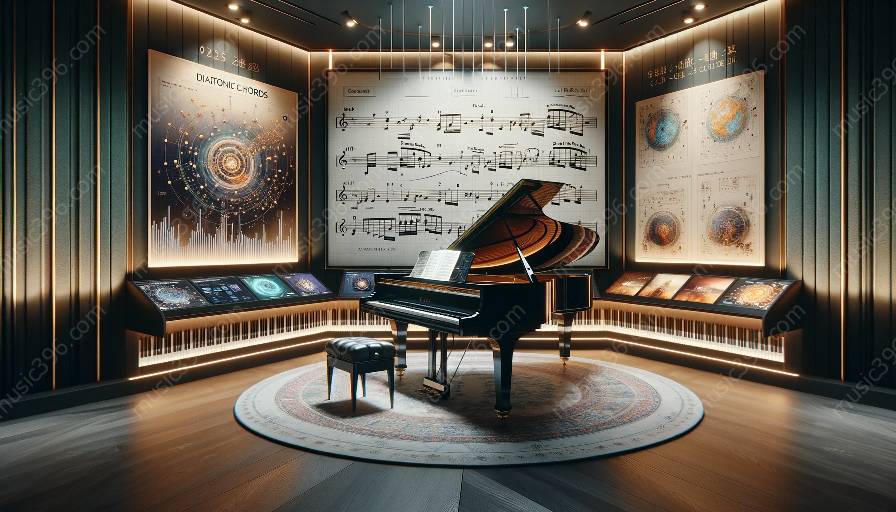Introduction to Diatonic Chords and Music Theory
Music theory is the study of the structure and elements of music. Diatonic chords refer to the chords within a particular key and are the foundation of Western music harmony. The historical development and evolution of diatonic chord progressions have significantly influenced the composition and improvisation of music throughout the centuries.
Early Sources of Diatonic Chord Progressions
Historical records indicate that the use of diatonic chord progressions can be traced back to ancient musical cultures. The earliest examples of diatonic chord progressions were found in the music of ancient Greece and Rome, where the concepts of harmony and tonality began to emerge.
Medieval and Renaissance Period
During the medieval and Renaissance periods, the modal system played a crucial role in shaping diatonic chord progressions. Modal music relied on specific scales and chords, which paved the way for the development of diatonic harmony. Composers such as Guillaume de Machaut and Josquin des Prez made significant contributions to the establishment of diatonic chord progressions within the framework of modal music.
The Baroque Era
The Baroque era witnessed a remarkable evolution in the use of diatonic chord progressions. The emergence of functional harmony, characterized by the use of major and minor scales, culminated in the development of diatonic chord progressions as fundamental building blocks of tonal music. Composers like Johann Sebastian Bach and George Frideric Handel explored the intricate possibilities of diatonic harmony, laying the groundwork for future developments in music theory.
Classical and Romantic Period
During the classical and romantic periods, the concept of diatonic chord progressions continued to evolve. Composers such as Wolfgang Amadeus Mozart and Ludwig van Beethoven expanded the harmonic language by employing diatonic progressions in their compositions. The use of diatonic chords became essential in creating emotional depth and expressive power in music, contributing to the richness of musical expression.
Twentieth Century Innovations
The twentieth century witnessed significant innovations in diatonic chord progressions, particularly with the emergence of new musical styles and genres. The expansion of jazz, blues, and popular music led to the exploration of non-traditional harmonic structures within the framework of diatonic chords. Influential figures like Duke Ellington and George Gershwin revolutionized the use of diatonic progressions, contributing to the diversity of harmonic possibilities in modern music.
Contemporary Applications
In contemporary music, the historical development and evolution of diatonic chord progressions remain vital to understanding the harmonic language. The fusion of traditional and innovative approaches to diatonic harmony continues to inspire composers and musicians across various genres. Whether in classical, jazz, or popular music, diatonic chord progressions serve as a timeless framework for musical creativity and expression.
Conclusion
The historical development and evolution of diatonic chord progressions have shaped the landscape of music theory and composition. From ancient cultures to modern genres, the significance of diatonic chords as harmonic elements endures as a cornerstone of musical expression. Understanding the historical context and evolution of diatonic chord progressions provides invaluable insight into the intricate tapestry of music and its enduring impact on human culture.

















































